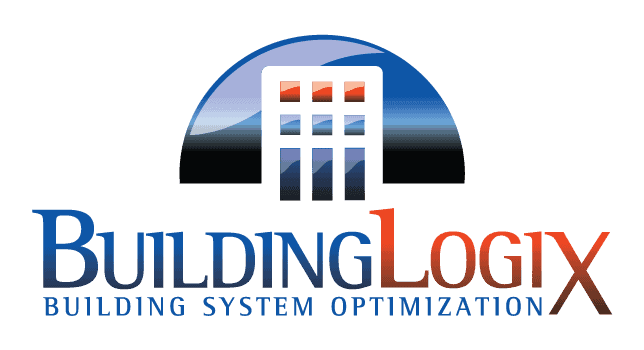 https://buildinglogix.net/wp-content/uploads/2024/07/Side-view-of-an-empty-hall-in-the-modern-office-building.jpg
1250
2000
John Halcomb
https://buildinglogix.net/wp-content/uploads/2024/02/Building-Logix-Logo.png
John Halcomb2024-07-08 10:11:442024-07-26 11:53:42Why Your Business Needs Indoor Air Quality Monitoring
https://buildinglogix.net/wp-content/uploads/2024/07/Side-view-of-an-empty-hall-in-the-modern-office-building.jpg
1250
2000
John Halcomb
https://buildinglogix.net/wp-content/uploads/2024/02/Building-Logix-Logo.png
John Halcomb2024-07-08 10:11:442024-07-26 11:53:42Why Your Business Needs Indoor Air Quality MonitoringHow Building Management Systems Improve Energy Efficiency
As the world becomes increasingly conscious of energy efficiency, building owners and facility managers actively seek ways to reduce property waste. One powerful solution that has gained significant popularity is the implementation of building management systems. Keep reading to learn more about the concept of a building management system, its components, and its role in enhancing building energy performance.
What Is a Building Management System?
A building management system is a sophisticated, computer-based control system designed to monitor and manage a building’s various mechanical and electrical systems. The primary objective is to optimize the operation of these systems, ensuring a comfortable and safe environment for occupants while minimizing energy consumption and operational costs.
Building management systems use the following components to monitor and control a wide variety of equipment:
Sensors and Actuators
A building management system relies on an array of sensors, such as temperature, occupancy, humidity, and light, to collect real-time data about the building’s conditions. Actuators are used to control various devices like dampers, valves, and lighting fixtures based on the data received from the sensors.
Central Processing Unit (CPU)
The CPU is the brain of the system. It processes the data received from sensors, executes pre-programmed algorithms, and sends commands to actuators to regulate the building’s systems accordingly.
Human-Machine Interface (HMI):
The HMI allows building operators to interact with the system, providing them with a user-friendly interface to monitor the building’s performance, adjust settings, and receive alerts about any irregularities.
Communication Protocols:
Building management system components communicate through various protocols, such as BACnet, Modbus, LonWorks, or KNX, to ensure seamless data exchange and interoperability between different systems.
Data Storage and Analysis:
The systems collect vast amounts of data over time. This data is stored and analyzed to identify trends, patterns, and opportunities for further optimization.
What Equipment Impacts Commercial Energy Efficiency?
Several equipment and systems within commercial buildings significantly impact energy efficiency. Understanding these components is essential for building owners and facility managers to recognize the areas where energy savings can be achieved. Let’s delve into some of the major contributors:
HVAC Systems
HVAC systems are among the most energy-intensive components in commercial buildings. They regulate indoor temperature and air quality to provide a comfortable environment for occupants. A building management system can optimize HVAC operations by analyzing occupancy patterns, outdoor weather conditions, and indoor temperature requirements. By doing so, they ensure that HVAC systems operate at their optimal efficiency and avoid unnecessary energy consumption.
Chillers
Chillers are responsible for cooling the water that circulates through the building’s air conditioning system. They consume a considerable amount of energy, especially in large commercial buildings. Building management systems can implement strategies like variable speed drives and chilled water temperature optimization to enhance chiller efficiency and reduce energy waste.
Lighting Systems
Traditional lighting systems, especially those using incandescent bulbs, consume significant amounts of energy. Upgrading to energy-efficient LED lighting and implementing lighting controls, such as occupancy sensors and daylight harvesting, can lead to substantial energy savings. A building management system manages lighting systems based on occupancy, time of day, and natural light availability, ensuring that lights are only used when necessary.
Building Envelope
The building’s envelope, including walls, windows, doors, and roofs, plays a crucial role in insulation and thermal performance. Poor insulation can lead to significant energy losses due to heating and cooling requirements. A building management system can monitor indoor temperature fluctuations and adjust HVAC systems accordingly, compensating for any inefficiencies in the building envelope.
Integrating Building Management Systems for Multiple Industries
BuildingLogiX offers building management system integration services for multiple industries. See who we serve today.
Improve Building Energy Performance With Our Connected Building Services
Integrating a building management system into a facility allows businesses to increase energy efficiency and maintain the operational life of equipment. However, it’s a challenging task if they lack the staff to oversee the implementation process.
BuildingLogiX understands many companies’ issues when modernizing their building energy performance strategies and takes pride in working with clients to maximize commercial energy efficiency by implementing our Connected Building Services. Our staff delivers critical insight into the health of essential equipment by leveraging the following features:
BuildingLogiX Data eXchange (BDX)
The importance of a building automation system lies in the wealth of data it generates, offering valuable insights into the efficiency of its operations. However, without a platform capable of effectively collecting and interpreting this data, it becomes meaningless. This is where BDX comes in, seamlessly integrating with your existing environment and storing compiled statistics in a database accessible to clients. BDX facilitates data storage and creates visually engaging graphs, visualizations, and scorecards, making it easier to monitor and track progress.
Fault Detection and Diagnostics
Building automation systems are typically built to function despite minor issues, which puts extra strain on them and raises the risk of major breakdowns. However, CBS stands apart by incorporating advanced fault detection and diagnostics features that swiftly identify, isolate, and assess malfunctions as they happen. This capability boosts equipment efficiency and empowers your team to promptly address and repair minor issues.
Data Visualization
To fully optimize efficiency and minimize expenses, it is crucial to comprehend the data provided by your building automation system. That’s where we come in. We provide cutting-edge data visualization tools that allow you to effortlessly analyze and understand energy consumption patterns within your building. This custom dashboard empowers your staff to efficiently carry out maintenance tasks, enabling swift problem-solving and reducing downtime.
BuildingLogiX: Helping Businesses Create Energy-Efficient Buildings Since 2006
BuildingLogiX is a leading technology-driven service company that helps clients overcome challenges in creating and maintaining healthy buildings. Our scalable solutions optimize building performance, reduce operational costs, and maximize maintenance staff productivity. As a brand-agnostic company, we deliver tailored solutions to meet your enterprise’s unique needs. Contact us today to learn more about how we can assist you.



